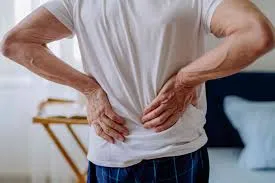
Spine pain is a common issue that can disrupt everyday activities and significantly affect quality of life. While occasional discomfort may result from temporary strain or fatigue, chronic pain in the spine often begins with underlying causes that require attention. Understanding the following root causes can help individuals to pursue targeted treatments and find lasting relief:
Root Causes of Spine Pain
Spine pain can stem from various issues, ranging from minor injuries to degenerative conditions. Identifying the source of pain is the first step toward effective treatment. Here are some root causes of spinal pain:
- Poor Posture: Years of poor posture, whether sitting at a desk or performing physical tasks incorrectly, may lead to misalignment in the spine. Over time, this misalignment places undue stress on muscles, ligaments, and spinal discs. Slouching or hunching forward causes imbalances that may result in chronic pain or stiffness.
- Disc Damage: Spinal discs act as cushions between vertebrae, absorbing shock and allowing for smooth movement. When a disc becomes herniated or degenerates due to aging, it can press on surrounding nerves, leading to pain, numbness, or weakened mobility. Disc-related pain often requires more specialized approaches to diagnose and treat effectively.
- Muscle Strain: Everyday activities, such as lifting heavy objects improperly or sudden awkward movements, may strain the muscles supporting the spine. This strain may lead to acute pain, swelling, or limited range of motion. Repeated overuse without adequate rest can further aggravate the condition.
- Spinal Stenosis: Spinal stenosis occurs when the spaces within the spine narrow, putting pressure on nearby nerves. This condition often develops as part of the natural aging process or from conditions like arthritis. Symptoms may include pain, tingling, weakness, or numbness, most commonly felt in the lower back or neck.
Relief With Treatment Options
Once the root cause of spine pain is identified, the next step is exploring a range of treatments to address the issue and alleviate discomfort. The choice of treatment often depends on the severity of the pain and its underlying cause. Here are some treatment options:
- Medications and Physical Therapy: For mild to moderate cases, medications such as anti-inflammatories or muscle relaxants are often effective. Physical therapy also plays a significant role in spine pain management. Guided exercises and stretches help strengthen core and back muscles, improve flexibility, and correct posture to prevent future discomfort.
- Targeted Injections: When traditional methods like medications fail to provide relief, targeted injections may help. Corticosteroid injections, for instance, can reduce inflammation around irritated nerves, offering temporary but meaningful relief. These procedures are typically performed under image guidance to ensure precision.
- Regenerative Therapies: Regenerative treatments, including platelet-rich plasma (PRP) therapy or stem cell therapy, are gaining momentum as innovative options for long-term relief. These therapies aim to repair damaged tissues, reduce inflammation, and promote natural healing. They are often sought by patients looking for alternatives to surgery.
- Spinal Decompression: For more persistent or severe cases of spine pain, spinal decompression therapy aims to relieve pressure on the spine’s discs and nerves. This non-surgical treatment gently stretches the spine, creating space for nutrients and oxygen to flow to damaged areas. Some patients experience significant pain reduction after several sessions.
Address Spine Pain with a Specialist
For those living with spine pain, making lifestyle adjustments can complement medical treatments and support long-term relief. Adjust workstations, chairs, and screens to promote proper posture during prolonged sitting. Low-impact activities like swimming, yoga, or walking can strengthen the spine and maintain flexibility. A comprehensive approach often yields the best results. Work with a medical professional for individualized care during your recovery.